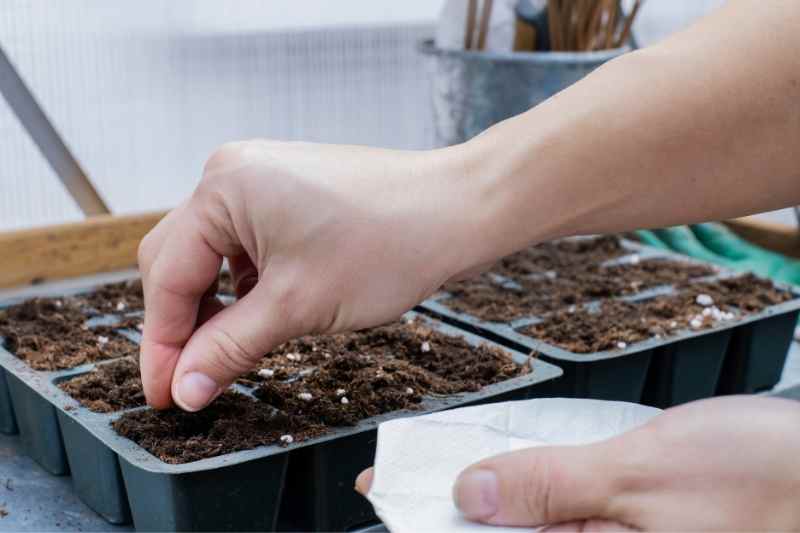With their upright habit and umbels of star-shaped blue, violet or white flowers, agapanthus add an elegant touch to gardens and terraces. The agapanthus are hardy perennials with rootstocks native to South Africa. There are about ten species. More or less hardy, they can withstand temperatures ranging from -5 to -15 degrees.
Adorned with ribbon-like leaves 10 to 35 cm long, deciduous or evergreen depending on the species, they can reach a height of 30 cm to 1.50 metres. They flower from May to September. Easy to grow, they love the sun and well-drained soil. They require watering in summer and, depending on the species, protection from frost in winter.
To propagate them, dividing the rootstocks is the quickest method. They can also be grown from seed, but it will take about 4 years before the young plants flower.

Where to sow agapanthus?
Agapanthus seeds can be sown under cover in a bright location.
When to sow agapanthus seeds?
Sowing is best done at the end of winter or early spring, in March-April.
How to sow agapanthus?
- At the end of summer, collect seeds from faded flowers and let them dry.

Use the clearly visible black seeds from dried agapanthus flower heads
- The following spring, sow them in a tray of seed compost, making sure to space them well. Cover them with a thin layer of compost, then place at a temperature of 18°C. For best results, you can place the sowing in a polythene bag. Water lightly to moisten the compost without making it waterlogged.

- After 3 weeks to 1 month, the seedlings emerge. When they can be handled, transplant them into buckets about 7 cm in size, in a mixture of half compost and half sand. Keep them under cover, watering moderately to prevent moisture stagnation.
- Six months later, repot them into a larger pot about 13 cm in size.
- Keep them sheltered until the following spring, when you can start acclimatising them outdoors for 10 to 15 days, choosing a sunny spot.
- After this phase and when the frosts are over, plant the rootstocks in the ground at 5 cm deep and spaced 38 to 45 cm apart. Choose a sunny location with well-drained soil.
Good to know: as the seeds come from cross-breeding, the flowers may not be identical to the plant from which you collected them.
Discover our complete guide on growing agapanthus and Agapanthus: 7 reliable varieties
































Comments